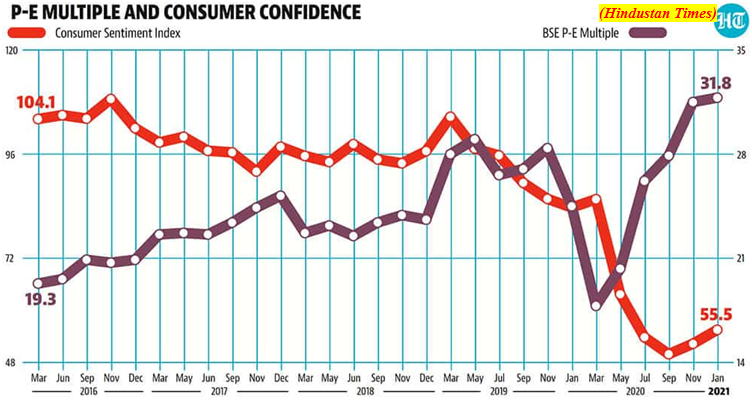Charting the economic journey ahead (GS Paper 3, Economy)

Context:
- By 2047, India will complete 100 years after Independence. By that time, will India achieve the status of a developed economy, which means achieving a minimum per capita income equivalent to $13,000?
Background:
- India’s economic journey started with Independence. It is not realised often that India’s economic progress in the first half of the 20th century under British rule was dismal.
- During the five decades, India’s annual growth rate was just 0.89%. With the population growing at 0.83%, per capita income grew at 0.06%.
Early strategy:
In the early period, India’s strategy of development comprised four elements —
- raising the savings and investment rate;
- dominance of state intervention;
- import substitution, and
- domestic manufacture of capital goods.
- To some extent, policymakers in India in the 1950s and 1960s were handicapped. At that time, there was no clear model available for accelerating growth in developing countries. State intervention on an extensive scale seemed to be appropriate, even though there were some critics even at that time.
- However, by the end of 1970s, it was becoming clear that the model India had chosen was not delivering and that it needed modification.
New Economic Policy:
It was the crisis of 1990-91 that compelled the policymakers to take three important directions:
- Dismantling the complex regime of licences and permits;
- Redefining the role of state;
- Giving up the inward looking trade policy.
Economic growth during 1970s:
- India’s average growth till the end of the 1970s remained modest, with the average growth rate being 3.6%. With a population growth of 2.2%, the per capita income growth rate was extremely modest at 1.4%. However, on certain health and social parameters, such as the literacy rate and life expectancy, there were noticeable improvements.
- While India had to rely on the heavy imports of foodgrains on a concessional basis, initially, there was a breakthrough in agriculture after the Green Revolution. The industrial base also widened. India became capable of producing a wide variety of goods including steel and machinery.
Economic performance was less than expectations:
- Plan after plan, actual growth was less than what was projected. The Indian economy did grow at 5.6% in the 1980s.
- But it was accompanied by a sharp deterioration in the fiscal and current account deficits, and the economy faced its worst crisis in 1991-92.
Growth Post 1992:
- Between 1992-93 and 2000-01, GDP at factor cost grew annually by 6.20%. Between 2001-02 and 2012-13, it grew by 7.4% and the growth rate between 2013-14 and 2019-20 was 6.7%.
- The best performance was between 2005-06 and 2010-11 when GDP grew by 8.8%, showing clearly what the potential growth rate of India was. This is the highest growth experienced by India over a sustained period of five to six years.
- This was despite the fact that this period included the global crisis year of 2008-09. During this period, the investment rate reached a peak of 39.1% 2007-08.
- There was a corresponding increase in the savings rate. The current account deficit in the Balance of Payments (BOP) remained low at an average of 1.9%. However, the growth story suffered a setback after 2011-12.
- The growth rate fell to 4.5% in 2012-13 according to the 2004-05 series. The growth rate since then has seen ups and downs. The growth rate touched the 3.7% level in 2019-20.
Post COVID-19:
- Post COVID-19 and the Russia-Ukraine war, there is a need to lay down a road map for India’s future development.
- The first and foremost task is to raise the growth rate. Calculations show that if India achieves a 7% rate of growth continuously over the next two decades and more, it will make a substantial change to the level of the economy.
- This in turn requires that India needs to raise the Gross Fixed Capital Formation rate from the current level of 28% of GDP to 33% of GDP.
- If, at the same time, India maintains the incremental capital output ratio at 4, which is a reflection of the efficiency with which we use capital, India can comfortably achieve a 7% rate of growth.
Strengthen social safety nets:
- India needs to absorb the new technologies that have emerged, and that will emerge. Its development strategy must be multidimensional.
- India needs a strong export sector. At the same time, India needs a strong manufacturing sector. The organised segment of this sector must also increase.
- As output and income increase, India must also strengthen the system of social safety nets. Growth without equity is not sustainable.
Way Forward:
- India today is the fifth largest economy. This is an impressive achievement. However, in relation to per capita income, it is a different story. In 2020, India’s rank was 142 out of 197 countries.
- The external environment is not going to be conducive. The Organisation for Economic Co-operation and Development reports a secular decline in growth in developed countries. India have no choice but to grow fast, given the present level of per capita income.


